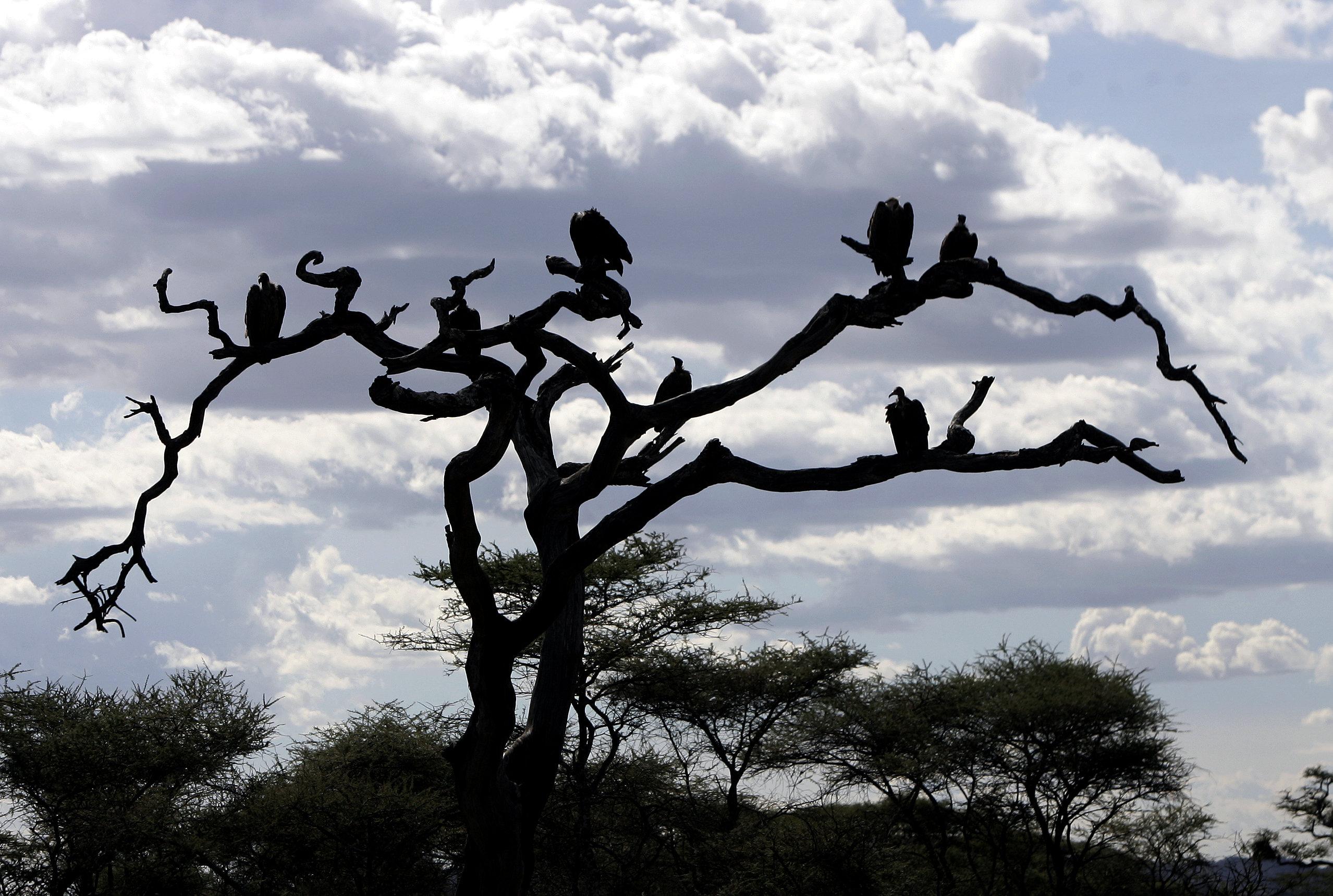The word vulture conjures up visions of boughs laden with crook-neck birds or silhouettes circling in the sky, patiently waiting for death to come to some poor creature. We say “the vultures are circling” to signal that someone is in danger of failing and their competitors are getting ready to swoop in. It turns out that these popular depictions of the world’s most unloved birds are pretty accurate. Vultures really are … well, vultures.
For decades, scientists believed that the vultures in Africa’s Serengeti-Mara ecosystem followed the most abundant food supply—the 1.3 million wildebeest migrating between Tanzania’s Serengeti National Park and Kenya’s Masai Mara National Reserve. But it turns out that vultures aren’t concerned with how many wildebeest are in a given area. Instead, vultures haunt areas where animals are more likely to die.
Vultures are the only obligate scavengers, and they feed primarily on the decaying flesh of animals that died as a result of starvation or disease. The birds have to be able to scan large areas and quickly detect carrion before it is snatched up by hyenas or jackals or decomposed by microbes. Because of their efficient, low-energy soaring flight, vultures can forage over extremely large areas, but researchers didn’t understand how the birds decided where to search.
To learn how vultures select habitat, Corinne Kendall of Columbia University and her colleagues outfitted 39 birds from three vulture species with GPS transmitters and tracked their whereabouts over the course of several months.
Wildebeest are abundant in the study region throughout the year, but the vultures’ behavior varied with the season. Members of all three species followed the herds only during the dry season—that’s when wildebeest are more likely to die from starvation and drowning.
During the wet season, birds from two of the vulture species preferred to hang out in relatively dry, brown areas. Since rainfall and the availability of edible plants have major impacts on the survival of wildebeest and other ungulates, these parched landscapes are where animals are likely to die.
Focusing their attention on death traps rather than following the migrating herds might not be a great long-term survival strategy, unfortunately. Conservationists are concerned that vultures apparently rely on resident ungulate species during the wet season. Those species are rapidly declining throughout Kenya and in particular in the Masai Mara National Reserve. Food availability is important to a vulture’s survival—especially a chick’s. Two of the species in the study, the White-backed vulture and Ruppell’s vulture, have been up-listed to endangered by the IUCN Red List, while the third species, the Lappet- faced vulture, remains vulnerable.
